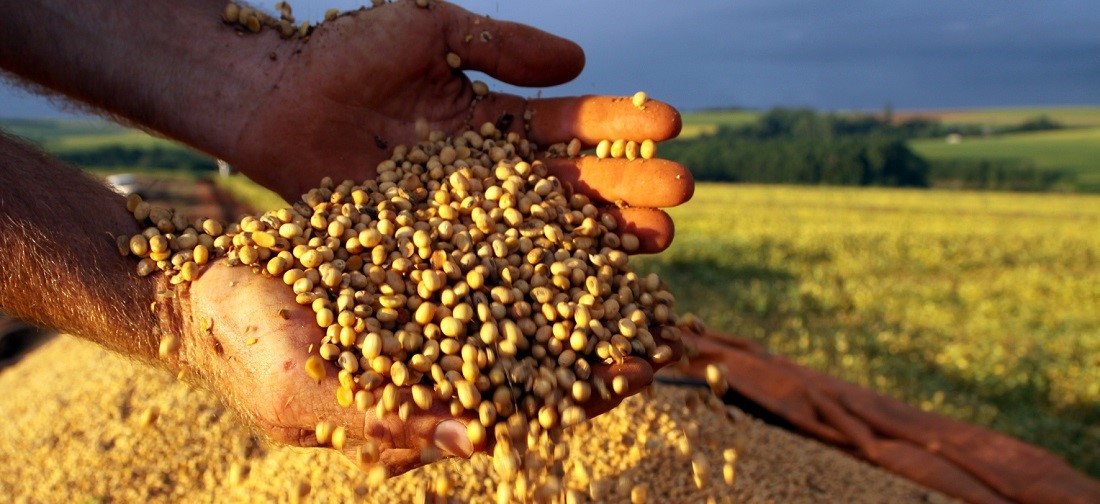
China reduces soybean purchases from the U.S., despite delays in Brazil
Jan, 31, 2025 Posted by Sylvia SchandertWeek 202505
Soybean harvest in Brazil is progressing slowly, delaying the arrival of supplies to buyers. However, China, which accounts for more than 70% of Brazil’s annual exports, shows no concern about the delays.
In some cases, delays in Brazil’s harvest can extend the U.S. soybean export window, but recently, both general shipments and China’s share of U.S. purchases have been weak.
U.S. soybean exports to China peaked for one week in mid-January, but this movement was temporary. Over the past few months, weekly sales volumes have generally been below average, even when compared to more modest expectations.
Decline in Chinese purchases and lower U.S. share
As of January 23, U.S. soybean sales to China in the 2024-25 marketing year accounted for 47% of total reserves, the lowest level in 17 years without a trade war. Another 9% of sales were to unspecified destinations, which is within the normal range, suggesting that Chinese purchases are not being hidden.
In terms of volume, Chinese reserves of U.S. soybeans fell 3% year-on-year, reflecting a similar reduction predicted by the U.S. Department of Agriculture (USDA) for Chinese soybean imports in 2024-25. However, recent Chinese imports have fallen below that mark due to lower Brazilian supply. Chinese purchases in November and December dropped 15% compared to the previous year despite a corresponding increase in U.S. shipments.
In addition to delays in Brazil, China’s Minister of Agriculture stated last week that the country’s pig farming sector has overcome a phase of losses, which could, in theory, boost soybean demand. Furthermore, crushing margins for soybeans in China have also improved in recent weeks. However, these factors have not yet translated into a rebound in Chinese purchases of U.S. soybeans.
Expectations for the coming months
There is speculation in the sector that China may have advanced U.S. soybean purchases to avoid potential tariffs. However, U.S. export data does not support this theory.
The trend is for Chinese imports to remain low in the coming weeks, as Brazil’s January exports were below last year’s levels and initial forecasts. However, starting in February, Brazilian supply is expected to increase significantly with competitive prices. Shipping data suggests that Brazil’s exports will surpass historical averages next month and could rival volumes recorded last year despite harvest delays.
Impacts on the U.S.
Despite the forecast for below-average exports in 2024-25, U.S. soybean sales to destinations outside China are performing well. So far, these exports are the third-highest in history for this period and have increased by 30% compared to the previous year. Europe stands out, where volumes are above normal levels.
China, however, remains a crucial market, accounting for 54% of U.S. soybean exports in the 2023-24 cycle. It is still unclear whether this trade flow will be further impacted, especially given the possibility of new U.S. tariffs on Chinese goods, which former President Donald Trump proposed last Thursday.
The market reflects this uncertainty with soybean price declines, particularly compared to corn. In this context, it is expected that U.S. farmers will reduce soybean planting area in the next season, opting for more corn cultivation, which could help balance soybean supply.
Source: Portal do Agronegócio
-
Shipping
Nov, 27, 2024
0
Rivals scramble to keep pace with MSC
-
Blog News (ENG)
Aug, 24, 2023
0
Brazil official says China wants smaller list of meat plants for exports
-
Fruit
Nov, 01, 2023
0
Argentina resumes exports of organic citrus to the EU
-
Trade Regulations
May, 25, 2021
0
Government to access the impact on the Brazilian market of importing agricultural products


